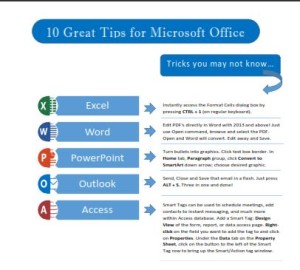Uses for the Camera Tool
There is a little known spiffy tool that has been available for a long time in Excel which allows you to take screenshots of data from multiple worksheets or workbooks and paste them in a separate workbook as objects with links to their original locations. This can include ranges, tables or charts. Even better, if the original object updates, so does the linked object on your “collector” worksheet.

Here’s a short video to give you a quick overview of what the Excel Camera tool can do for capturing data and objects from different areas:
Collect desired data on one worksheet
For instance, you want to know the sales or prices from workbooks saved in different locations. You have figures for sales reps and a corresponding chart in Workbook A, and expenses that you want to track in Workbook B. Someone else may be updating the data but because anything you copy and paste with the Camera tool is pasted as a linked picture, any changes made to original data will auto update your screenshots.
Print collected objects on one page
This is also a great way to collect different areas of the same or separate worksheets or workbooks for printing a variety of data on one page as you can resize and move the different objects anywhere on the worksheet.
Add Camera Tool to Quick Access Toolbar (QAT)
First things first…The Camera is not available on the Ribbon by default so needs to be added to the QAT with the Customize Quick Access toolbar command:
- Click the drop down arrow at end of Quick Access Toolbar. Choose More Commands… (or right click on the Ribbon)
- Choose All Commands from drop down arrow next to Choose Commands from:
- Scroll down the alphabetical list and click Camera.
- Click Add button to add to Quick Access toolbar.
- Click OK button at bottom of dialog box to place the Camera icon at the end of the QAT.
How to Capture a Screenshot
Select a range, table or chart to activate the Camera tool. Note, if selecting a chart, select the cell above the top, left border of the chart and draw around it. When you release the mouse, the “marching ants” will be around the object as if you had used the Copy command:
- Go to your destination; usually in another worksheet or workbook.
- Click in the desired cell location and the linked picture will auto insert.
- Move and size the object(s) as desired.
Similar Feature with Paste Special Linked Picture
The newer versions of Excel (2007+) have another feature which behaves the same as the Camera tool – the Paste Special Linked Picture. I still prefer the Camera tool as just clicking on the desired destination cell pastes the linked image, all ready for sizing and relocating but both work.
The Camera tool can also be used to create Dashboards. We’ll cover that and some of the other options in an upcoming blog.
Take a picture and let me know what you think!
Want more ways to use the Camera? See Part 2: Camera Tool Part 2






















 Click to download great tips to speed up your Office projects.
Click to download great tips to speed up your Office projects.